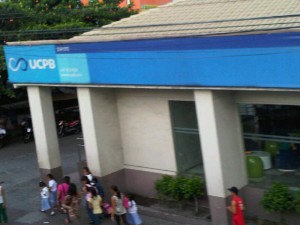
Enormous liquidity of banks has given them capability to maintain over the medium term the robust pace of lending growth seen recently, according to Fitch Ratings. Photo by Rick Alberto
MANILA, Philippines—Fitch Ratings said the Philippines might be at an early stage of a credit boom, citing the enormous liquidity enjoyed by the banking sector that has given it capability to maintain over the medium term the robust pace of lending growth seen recently.
In its latest report on the Philippines, Fitch said the substantial resources of banks in the country would be favorable given the significant financing requirement of the public sector to support costly infrastructure projects.
However, the international credit watchdog also warned of adverse consequences if lending and investment activities would not come along with strict monitoring by the country’s monetary officials.
“[The pace of credit growth] suggests the Philippines could be in the midst of a nascent credit boom,” Fitch said in the report.
“In the near term, this [robust pace of credit growth registered since 2011] could prove highly favorable… Over the longer term, however, it is likely to test the BSP’s macroeconomic management abilities after so many years of sustained onshore de-leveraging,” Fitch said.
Fitch explained that following the 1997 Asian financial crisis to 2010, credit growth in the Philippines may be described as anemic to moderate. Given this, there is risk the BSP may not be fully on guard amid threat of a credit boom over the medium term, according to Fitch.
Credit extended by private firms in the country fell from 67 percent of gross domestic product in 1997 to only 28.9 percent in 2007, Fitch noted. But the figure sharply bounced to 70 percent by the end of 2011, it added.
Economists define credit boom, in contrast to healthy level of credit growth, as characterized by lending spree that could lead to asset price bubbles and overheating of an economy.
Fitch suggested that the Bangko Sentral ng Pilipinas be prepared to implement measures that could prevent a potentially full-blown credit boom in the future.
For instance, it said, the BSP could increase the reserve requirement—the proportion of deposits that banks must keep as reserves and, therefore, must not lend out—to levels that would keep lending growth at a prudent pace. The reserve requirement currently stands at 18 percent.
Since the start of 2011, credit growth has sustained a double-digit pace of growth on the back of rising resources of banks. These resources are being driven largely by increasing deposits from the public and partly by bank profits.
Fitch noted that banks in the Philippines could sustain the double-digit pace of lending growth in the next couple of years given available liquidity. It cited the P1.6 trillion in cash currently parked by banks at the special deposit account facility of the BSP. Fitch said this money could be tapped anytime for lending activities.
“The potential economic and social positives that may stem from an investment-led boom in the Philippines are substantial. That said, Fitch is wary of the potential consequences a credit boom could engender in light of ample onshore liquidity,” it said.